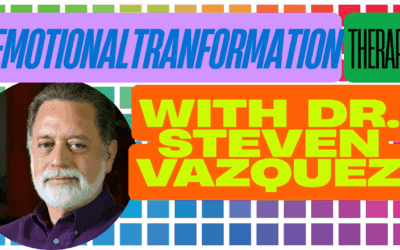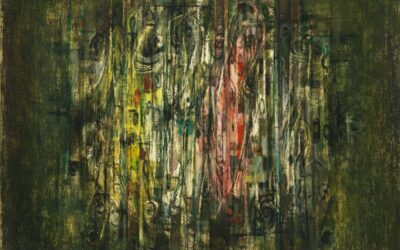What is Attachment-Based Family Therapy (ABFT)?

Attachment-Based Family Therapy (ABFT) is an innovative and empirically supported family therapy model that aims to repair ruptures in attachment relationships between adolescents and their parents. This article provides an in-depth exploration of ABFT, including its core tenets, development, influencers, cultural context, interventions, goals, and evidence base.
Core Assumptions and Tenets
ABFT is grounded in attachment theory, which posits that children develop secure or insecure attachments with their primary caregivers based on the quality of early interactions. Secure attachments foster healthy emotional regulation, while insecure attachments can lead to psychological distress. ABFT assumes that:
- Attachment relationships are crucial for healthy adolescent development.
- Ruptures in attachment, often due to parental criticism, control, or neglect, contribute to adolescent depression and suicide risk.
- Repairing attachment bonds can alleviate psychological symptoms and promote resilience.
- Parents serve as primary attachment figures and can be empowered to support their adolescents.
Development of ABFT
ABFT was developed by Guy Diamond, Gary Diamond, and Suzanne Levy in the early 2000s at Drexel University’s Center for Family Intervention Science. The model emerged from their clinical work with depressed and suicidal adolescents and their families.
Guy Diamond Biography
Guy Diamond, Ph.D., is a Professor Emeritus at Drexel University and the lead developer of ABFT. His research focuses on understanding and treating depression and suicide in adolescents and their families. Diamond received his Ph.D. in clinical psychology from the University of Pennsylvania and completed postdoctoral training at the Philadelphia Child Guidance Center.
Influencers and Collaborators
ABFT draws inspiration from various theoretical frameworks and therapeutic approaches, including:
- Attachment theory (John Bowlby, Mary Ainsworth)
- Structural family therapy (Salvador Minuchin)
- Emotionally focused therapy (Sue Johnson)
- Interpersonal psychotherapy (Gerald Klerman, Myrna Weissman)
Diamond collaborated with his brother, Gary Diamond, Ph.D., and Suzanne Levy, Ph.D., in developing and refining the ABFT model.
Cultural and Economic Context
ABFT emerged in the early 2000s, a time of increasing awareness about the prevalence and impact of adolescent depression and suicide. The model sought to address the need for effective, family-based interventions that could engage reluctant adolescents and their families.
Timeline of ABFT Development
- 2002: Initial development of ABFT begins at Drexel University
- 2005: First randomized controlled trial of ABFT published
- 2010: ABFT manual published
- 2014: ABFT Training Program established
- 2016: ABFT recognized as an evidence-based practice by the Substance Abuse and Mental Health Services Administration (SAMHSA)
Conceptualization of Trauma, the Unconscious, and Self-Identity
ABFT recognizes the impact of attachment-related trauma on adolescent development. Traumatic experiences, such as parental criticism or neglect, are seen as disrupting the child’s sense of safety and security, leading to the development of insecure attachment patterns and negative self-perceptions.
The model does not explicitly address the unconscious but focuses on the conscious experiences of adolescents and their families. ABFT aims to help adolescents develop a coherent and positive sense of self by repairing attachment relationships and promoting parental support.
Interventions and Techniques
ABFT employs a range of interventions and techniques, including:
- Relational reframes: Reframing problems as relational issues rather than individual deficits.
- Attachment tasks: Helping adolescents express their attachment needs and experiences to their parents.
- Parenting skills: Teaching parents to provide emotional support and validation to their adolescents.
- Enactments: Facilitating direct, emotionally charged interactions between adolescents and parents to repair attachment ruptures.
- Reprocessing: Helping adolescents and parents make sense of past experiences and develop new, more adaptive narratives.
Goals and Stages of Treatment
ABFT is typically delivered in 12-16 weekly sessions and progresses through five stages:
- Relational reframe: Introducing the attachment framework and engaging the family.
- Adolescent alliance: Building trust with the adolescent and exploring their attachment experiences.
- Parent alliance: Helping parents understand their role in the adolescent’s distress and empowering them to provide support.
- Attachment repairing: Facilitating enactments and reprocessing to repair attachment ruptures.
- Promoting autonomy: Consolidating gains and preparing the family for termination.
The overarching goal of ABFT is to alleviate adolescent depression and suicide risk by repairing attachment relationships and promoting secure attachment bonds.
Evidence Base
ABFT has been evaluated in several randomized controlled trials, demonstrating its efficacy in reducing adolescent depression, suicidality, and family conflict. The model has been recognized as an evidence-based practice by SAMHSA and is included in the National Registry of Evidence-based Programs and Practices (NREPP).
Contexts of Practice
ABFT is primarily practiced in outpatient mental health settings, including community clinics, private practices, and university-based research centers. The model has been adapted for use in diverse cultural contexts and with various populations, including LGBTQ+ youth and families.
Uniqueness and Integration with Other Models
ABFT is unique in its focus on repairing attachment relationships as a primary mechanism of change in treating adolescent depression and suicidality. The model integrates elements of structural family therapy, emotionally focused therapy, and interpersonal psychotherapy, but maintains a distinct emphasis on attachment theory and relational interventions.
Modern therapists can integrate ABFT techniques, such as relational reframes and attachment tasks, into their existing practice to enhance their work with adolescents and families. The model’s focus on promoting parental support and facilitating emotionally charged interactions can complement other therapeutic approaches.
Bibliography
- Diamond, G. S., Diamond, G. M., & Levy, S. A. (2014). Attachment-based family therapy for depressed adolescents. American Psychological Association.
- Diamond, G. S., Wintersteen, M. B., Brown, G. K., Diamond, G. M., Gallop, R., Shelef, K., & Levy, S. (2010). Attachment-based family therapy for adolescents with suicidal ideation: A randomized controlled trial. Journal of the American Academy of Child & Adolescent Psychiatry, 49(2), 122-131.
- Diamond, G. S., Reis, B. F., Diamond, G. M., Siqueland, L., & Isaacs, L. (2002). Attachment-based family therapy for depressed adolescents: A treatment development study. Journal of the American Academy of Child & Adolescent Psychiatry, 41(10), 1190-1196.
- Levy, S. A., & Diamond, G. S. (2016). Attachment-based family therapy. In J. J. Benson (Ed.), Advances in child and adolescent psychiatry (pp. 125-148). Elsevier.
- Ewing, E. S. K., Diamond, G., & Levy, S. (2015). Attachment-based family therapy for depressed and suicidal adolescents: Theory, clinical model and empirical support. Attachment & Human Development, 17(2), 136-156.
Further Reading
- Bowlby, J. (1988). A secure base: Parent-child attachment and healthy human development. Basic Books.
- Johnson, S. M. (2019). Attachment theory in practice: Emotionally focused therapy (EFT) with individuals, couples, and families. Guilford Press.
- Minuchin, S., & Fishman, H. C. (1981). Family therapy techniques. Harvard University Press.
- Weissman, M. M., Markowitz, J. C., & Klerman, G. L. (2000). Comprehensive guide to interpersonal psychotherapy. Basic Books.

























0 Comments